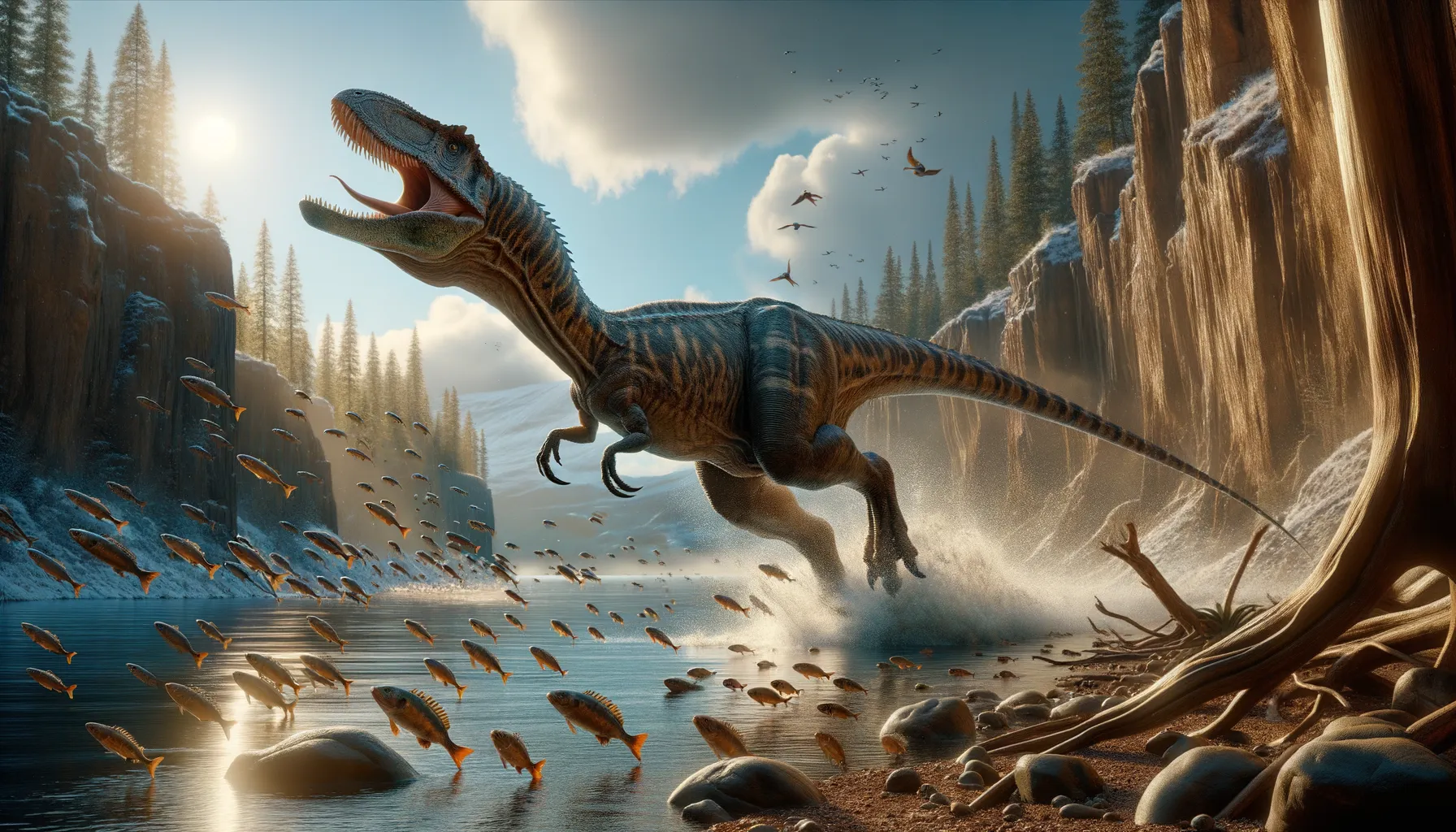
Vallibonavenatrix
A spiny predator of land and water.
Period
Cretaceous
Length
Estimated to be about 7 meters long.
Height
Approximately 2 meters tall at the hip.
Weight
Around 1,000 kg.
Vallibonavenatrix is a theropod dinosaur known from the Early Cretaceous period of Spain. It belonged to the Spinosauridae family, characterized by its large size and distinctive elongated skull. This carnivorous dinosaur likely preyed on fish and small land animals. Fossils suggest it had semi-aquatic habits, similar to its relatives. Its discovery sheds light on the diversity of spinosaurids in Europe during the Cretaceous.
Diet
Vallibonavenatrix was carnivorous, with a diet that likely included fish and small terrestrial prey. Its long snout and conical teeth suggest it was adapted to catching slippery prey in aquatic environments.
Hunting
While mainly piscivorous, it may have also hunted small animals near water sources. Its anatomy suggests it relied on stealth and patience, ambushing prey with quick movements.
Environmental challenges
Living in a semi-aquatic environment posed challenges like finding food in changing water levels. Seasonal climate variations affected resource availability, requiring adaptability. It also faced competition from other carnivores in its ecosystem, necessitating niche specialization.
Speed
Moderate, capable of short bursts.
Lifespan
Estimated to be several decades.
First discovery
First discovered in Spain in 2003.
Fun Facts
- Vallibonavenatrix was a carnivorous dinosaur that lived during the Early Cretaceous period, around 125 million years ago.
- This dinosaur was discovered in Spain and is known from fossils found in the province of Castellón.
- Vallibonavenatrix is classified as a theropod, a group that also includes famous predators like Tyrannosaurus rex.
- Its name, Vallibonavenatrix, means 'the huntress of Vallibona,' reflecting both its predatory nature and the location of its discovery.
- Fossils of Vallibonavenatrix include parts of its pelvis and vertebrae, giving scientists clues about its size and shape.
- The discovery of Vallibonavenatrix helped paleontologists understand more about the diversity of theropod dinosaurs in Europe during the Cretaceous period.
- Known for its sharp teeth and claws, Vallibonavenatrix was likely at the top of the food chain in its ecosystem.
Growth and Development
Vallibonavenatrix likely experienced rapid growth during juvenile stages to avoid predation. Its development included strengthening limbs and honing hunting skills. Reaching adulthood, it maintained energy reserves to survive in its dynamic environment.
Habitat
This dinosaur inhabited river deltas and coastal zones, benefiting from both aquatic and terrestrial resources. It preferred areas with abundant fish populations, supporting its semi-aquatic lifestyle. Fossil records indicate its environment was rich with diverse fauna and flora.
Interaction with other species
It coexisted with other theropods, herbivorous dinosaurs, and aquatic life. Competition with fellow predators influenced its hunting strategies. Symbiotic relationships with smaller species might have reduced insect and parasite burdens.
Natural lifespan
It potentially enjoyed a natural lifespan similar to modern reptiles, spanning several decades.
Reproduction
Reproductive strategies included laying eggs in nests near water, safeguarding hatchlings. Parental care was minimal, with young needing to fend for themselves quickly. Hatchlings grew rapidly to reach a size that decreased predation risk.
Social behaviour
Likely solitary, except during mating seasons. Display behaviors might have included visual cues using its sail. Interactions were brief; territorial disputes resolved with displays rather than physical confrontations.
Fossil locations
Fossils were unearthed in the Vallibona region of Spain. The discovery site provided crucial insight into Early Cretaceous ecosystems. Other spinosaurids found in the vicinity hint at a diverse range of predators inhabiting this area.
